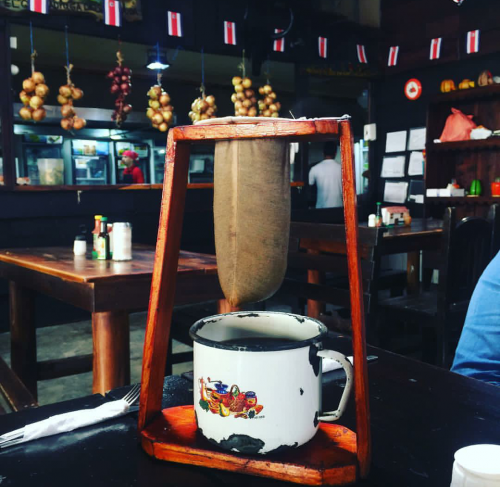Costa Rica is one of the most peaceful countries on the planet. And that’s not a figure of speech. It has no army, and no ongoing conflicts with any other power.
Its decision not to get involved with international spats has allowed it to quietly flourish and thrive. It’s a peace that benefits not just the Costa Rica citizens, but its ecosystems too.
Chorreador – What Is It?
Costa Rica is home to some of the most ecologically diverse regions in the world. It’s a perfect place to grow incredible coffee. And they take their beans and brews very seriously here. The traditional way to drink coffee in Costa Rica, if you want to sip like a local, is with a device called a Chorreador. If making coffee is a joyous partof your day, you’ll definitely want to employ this device in your process.
The word literally means ‘to pour coffee’ and that’s what it does; a chorreador filters and pours your drink at the same time. Let’s take a closer look at how the traditional chorreador works.
List of the Best Chorreadors On The Market
Come back for a list of the best ones you can buy now.
The Chorreador Method

Chorreadors are very simple “coffee makers”. There have two basic pieces: a wooden stand (usually the wooden stand is handmade), and a small cloth sack or cloth filter. The cloth filter sack is pushed through a hole at the top of the stand to allow it to hang directly over a coffee cup. Ground coffee beans are added. Then, hot water is poured over the top of these ground coffee beans. PS. You will need to experiment with the water ratio to the beans for a light or strong coffee taste.
Gradually, the water travels around the beans and takes the flavour of the coffee with it as it drips down into the cup. In other words, it’s a basic filtration system. Cleaning the cloth filter is easy to do: just rinse it with warm water.
The Costa Ricans swear by it for a wonderful cup of coffee and, in fact, the chorreador design has started to become popular in other parts of the world. Compared to our traditionally fast coffee makers, this brewing process may feel “slow” but if you’re like me, you enjoy the brewing process itself and the refreshing taste that can result from it!
The Design of the Costa Rican Chorreador
As the chorreador coffee maker is fairly easy to make, many Costa Ricans create gorgeous designs and shapes for their stands. If you visit the country, you’ll see both basic types, and beautifully crafted artisanal ones. Some are made out of soft woods, others hard.
While the bolsita (or cloth sack) is changed regularly, the stand can be used over and over again. So, it’s worth putting a little effort into creating something that’s visually appealing. If it’s carefully sanded and varnished, it may last a long time.
The bolsita is made out of cloth, so it has a shorter lifespan. Though, if cleaned properly, these little cloth sacks can last for several months.
To clean a bolsita, you just need water. Any type of soap or detergent would affect the taste of the brewed coffee. If it needs a deep clean to remove coffee staining, a salt scrub is usually sufficient.
The ‘Do It Yourself’ Method
If you want to experience an authentic cup of Costa Rican coffee, you can buy a chorreador or make one yourself. The latter is easier than you might think. All you need is a stand, a bag, and a small piece of steel wire.
If you don’t want to craft a wood stand from scratch, try using something like a fruit hook (or any other wide-based stand with a device for suspending the bolsita). There must be space for a coffee cup to sit underneath.
The bolsita should be suspended high enough so that it doesn’t hang directly into the coffee cup. It’s important to put a bit of distance between the two. You need the coffee to be thoroughly filtered for a great brew.
The Secret To A Beautiful Brew:
The alternative to making your own is to pick up an authentic, handmade Costra Rican chorreador online. But if you do, try to find a seller that benefits local communities in some way.
If you love coffee, it stands to reason that you’d want to protect the vibrant, verdant people and places who nurture it.